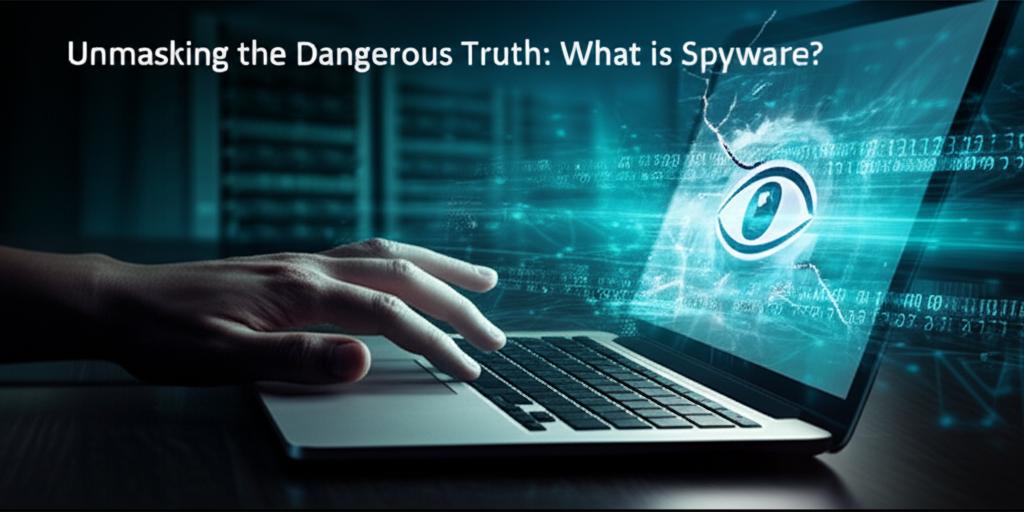Unmasking the Dangerous Truth: What is Spyware?
What is Spyware? A Comprehensive Guide to Digital Surveillance
In the vast and interconnected digital world, an insidious threat lurks in the background, silently compromising our privacy and security. This threat is known as spyware. Far more than just an annoyance, spyware represents a significant danger to individuals and organizations alike, collecting sensitive information without consent. Understanding what spyware is, how it operates, and how to combat it is crucial for navigating the internet safely.
How Does Spyware Work? The Mechanics of Covert Monitoring
At its core, spyware is a type of malicious software designed to gather information about a person or organization and transmit it to another entity in a way that harms the user. Unlike viruses that aim to destroy data, or ransomware that holds it hostage, spyware’s primary goal is stealthy data exfiltration.
- Installation Methods: Spyware often sneaks onto your device bundled with legitimate software, through phishing emails, infected websites, or by exploiting software vulnerabilities.
- Data Collection: Once installed, it operates in the background, typically unnoticed. It can record keystrokes (keyloggers), capture screenshots, monitor web browsing habits, track geographical location, collect email addresses, and even access microphone and camera feeds.
- Data Transmission: The collected data is then secretly transmitted over the internet to a remote server controlled by the attacker, often encrypted to avoid detection.
Common Types of Spyware and Their Tactics
The term spyware is an umbrella term encompassing various types of malicious software, each with its own specific modus operandi:
- Adware: While not always overtly malicious, some adware goes beyond serving unwanted ads, collecting browsing history to create a detailed user profile for targeted advertising, often without explicit consent.
- Keyloggers: These programs record every keystroke made on a keyboard, allowing attackers to capture usernames, passwords, credit card numbers, and other sensitive typed information.
- System Monitors: More comprehensive than keyloggers, these can record nearly all activity on a computer, including emails, chat conversations, websites visited, and programs run.
- Trojan Spyware: Often disguised as legitimate software, Trojans can open a backdoor on a system, allowing attackers to install spyware or other malware remotely.
- Web Beacons/Tracking Cookies: While many cookies are harmless, some persistent tracking cookies and web beacons (tiny, invisible graphics) are used by third parties to monitor user behavior across multiple websites.
The Dangerous Implications and Risks of Spyware
The presence of spyware on your device carries severe consequences:
- Privacy Invasion: Your personal life, habits, and communications can be exposed to unknown parties, leading to a profound sense of violation.
- Identity Theft: Stolen personal identifiable information (PII) like social security numbers, bank details, and passwords can be used for fraudulent activities, leading to financial loss.
- Financial Fraud: Direct access to banking credentials or credit card numbers can result in unauthorized transactions.
- Performance Degradation: Spyware can consume system resources, leading to slower computer performance, frequent crashes, and network bandwidth hogging.
- Security Breaches: By creating backdoors, spyware can make your system vulnerable to further, more destructive attacks.
Detecting and Removing Spyware: Essential Safeguards
Identifying spyware can be challenging due to its stealthy nature, but certain signs can indicate its presence:
- Sudden decrease in system performance.
- Unexpected changes to browser settings (homepage, search engine).
- New, unwanted toolbars or pop-up ads.
- Unusual hard drive activity.
- Increased internet data usage.
To combat spyware:
- Use Reputable Anti-Spyware Software: Install and regularly update robust antivirus and anti-malware programs that specifically detect and remove spyware.
- Run Regular Scans: Schedule full system scans to catch hidden threats.
- Update Software: Keep your operating system, web browsers, and all applications updated to patch security vulnerabilities that spyware could exploit.
Protecting Yourself from the Threat of Spyware
Prevention is always better than cure when it comes to spyware. Implement these best practices:
- Be Wary of Downloads: Download software only from trusted sources. Read end-user license agreements (EULAs) carefully to spot bundled spyware.
- Practice Email Vigilance: Do not open suspicious email attachments or click on unfamiliar links, especially those promising freebies or making urgent demands.
- Use a Firewall: A firewall monitors incoming and outgoing network traffic, blocking unauthorized connections.
- Strong Passwords: Use unique, complex passwords for all your accounts.
- Enable Multi-Factor Authentication (MFA): Add an extra layer of security to your accounts.
- Browse Securely: Stick to HTTPS websites and be cautious about sharing personal information online.
By staying informed and proactive, you can significantly reduce your risk of falling victim to the dangerous world of spyware. Protecting your digital footprint is an ongoing commitment to privacy and security in the modern age.







